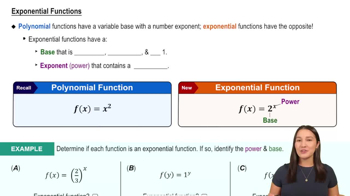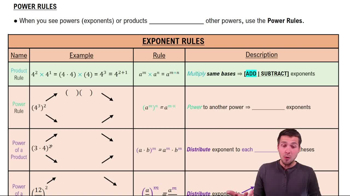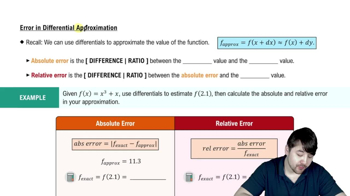Table of contents
- 0. Functions7h 52m
- Introduction to Functions16m
- Piecewise Functions10m
- Properties of Functions9m
- Common Functions1h 8m
- Transformations5m
- Combining Functions27m
- Exponent rules32m
- Exponential Functions28m
- Logarithmic Functions24m
- Properties of Logarithms34m
- Exponential & Logarithmic Equations35m
- Introduction to Trigonometric Functions38m
- Graphs of Trigonometric Functions44m
- Trigonometric Identities47m
- Inverse Trigonometric Functions48m
- 1. Limits and Continuity2h 2m
- 2. Intro to Derivatives1h 33m
- 3. Techniques of Differentiation3h 18m
- 4. Applications of Derivatives2h 38m
- 5. Graphical Applications of Derivatives6h 2m
- 6. Derivatives of Inverse, Exponential, & Logarithmic Functions2h 37m
- 7. Antiderivatives & Indefinite Integrals1h 26m
- 8. Definite Integrals4h 44m
- 9. Graphical Applications of Integrals2h 27m
- 10. Physics Applications of Integrals 2h 22m
4. Applications of Derivatives
Differentials
Problem 4.R.79
Textbook Question
60–81. Limits Evaluate the following limits. Use l’Hôpital’s Rule when needed.
lim_x→∞ (1 - (3/x))ˣ
 Verified step by step guidance
Verified step by step guidance1
Recognize that the limit \( \lim_{x \to \infty} \left(1 - \frac{3}{x}\right)^x \) is of the indeterminate form \(1^\infty\). This suggests the use of the exponential limit property.
Rewrite the expression using the natural exponential function: \( \lim_{x \to \infty} \left(1 - \frac{3}{x}\right)^x = \lim_{x \to \infty} e^{x \ln\left(1 - \frac{3}{x}\right)} \).
Focus on evaluating the exponent \( \lim_{x \to \infty} x \ln\left(1 - \frac{3}{x}\right) \). This is still an indeterminate form \(0 \cdot (-\infty)\).
Use the approximation \( \ln(1 + u) \approx u \) for small \(u\), so \( \ln\left(1 - \frac{3}{x}\right) \approx -\frac{3}{x} \). Substitute this into the limit: \( \lim_{x \to \infty} x \left(-\frac{3}{x}\right) = \lim_{x \to \infty} -3 \).
Conclude that the original limit is \( e^{-3} \) by substituting back into the exponential form: \( \lim_{x \to \infty} e^{x \ln\left(1 - \frac{3}{x}\right)} = e^{-3} \).
 Verified video answer for a similar problem:
Verified video answer for a similar problem:This video solution was recommended by our tutors as helpful for the problem above
Video duration:
4mPlay a video:
Was this helpful?
Key Concepts
Here are the essential concepts you must grasp in order to answer the question correctly.
Limits
Limits are fundamental concepts in calculus that describe the behavior of a function as its input approaches a certain value. They help in understanding the function's behavior at points where it may not be explicitly defined, such as at infinity or discontinuities. Evaluating limits is crucial for determining the continuity and differentiability of functions.
Recommended video:

One-Sided Limits
Exponential Functions
Exponential functions are mathematical functions of the form f(x) = a^x, where 'a' is a positive constant. They exhibit rapid growth or decay and are characterized by their unique property that the rate of change is proportional to the function's value. Understanding their behavior, especially as x approaches infinity, is essential for evaluating limits involving exponential expressions.
Recommended video:

Exponential Functions
l'Hôpital's Rule
l'Hôpital's Rule is a method used to evaluate limits that result in indeterminate forms, such as 0/0 or ∞/∞. It states that if the limit of f(x)/g(x) leads to an indeterminate form, the limit can be found by taking the derivative of the numerator and the derivative of the denominator separately. This rule simplifies the process of finding limits, especially in complex expressions.
Recommended video:
Guided course

Power Rules







